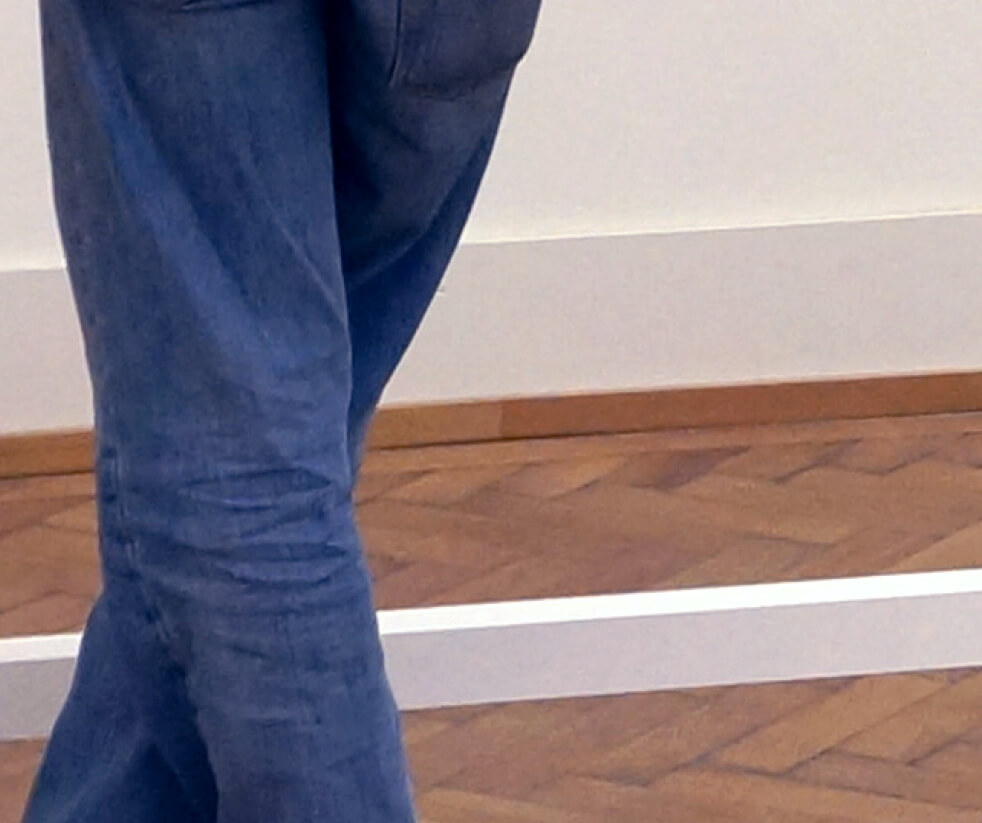>
Choir Corridor
Year
***last edited 24 01 2018
Location
Museum of Applied Arts (MAK) / Vienna, AT
Exhibition
Choir Corridor / MAK Nite Labs
Format
Site-Specific Performance, Printed Matter
Material
50 Person Choir, A6 Format Publication – Edition of 200:
Roaming Architectural Objects
Dimensions
± 2.5Hours / 5600ft2 (520m2), 80 Pages
Curator
Marlies Wirth
Performers
Vienna Chamber Choir / Boku Choir
Choir Director - Stephan Jung
For the project Choir Corridor, I developed a score for a site and space-specific performance in the MAK Columned Main Hall that asked singers to move from being a corridor into a wall. Performed by fifty members of the Vienna Chamber Choir and Boku Choir, the project explored the interplay of human interaction and space regarding group dynamics, mechanisms of crowd control, and voice. A limited-edition artist’s book, Roaming Architectural Objects, was produced for the event and given away during the performance. Overlaying an external narrative onto the space of the performance, the sections of the publication coincided with the open score of the sound-based choreography:
corridor – celebration and dissent
transition – the pragmatics of trust
wall – mythical boundaries
excerpt

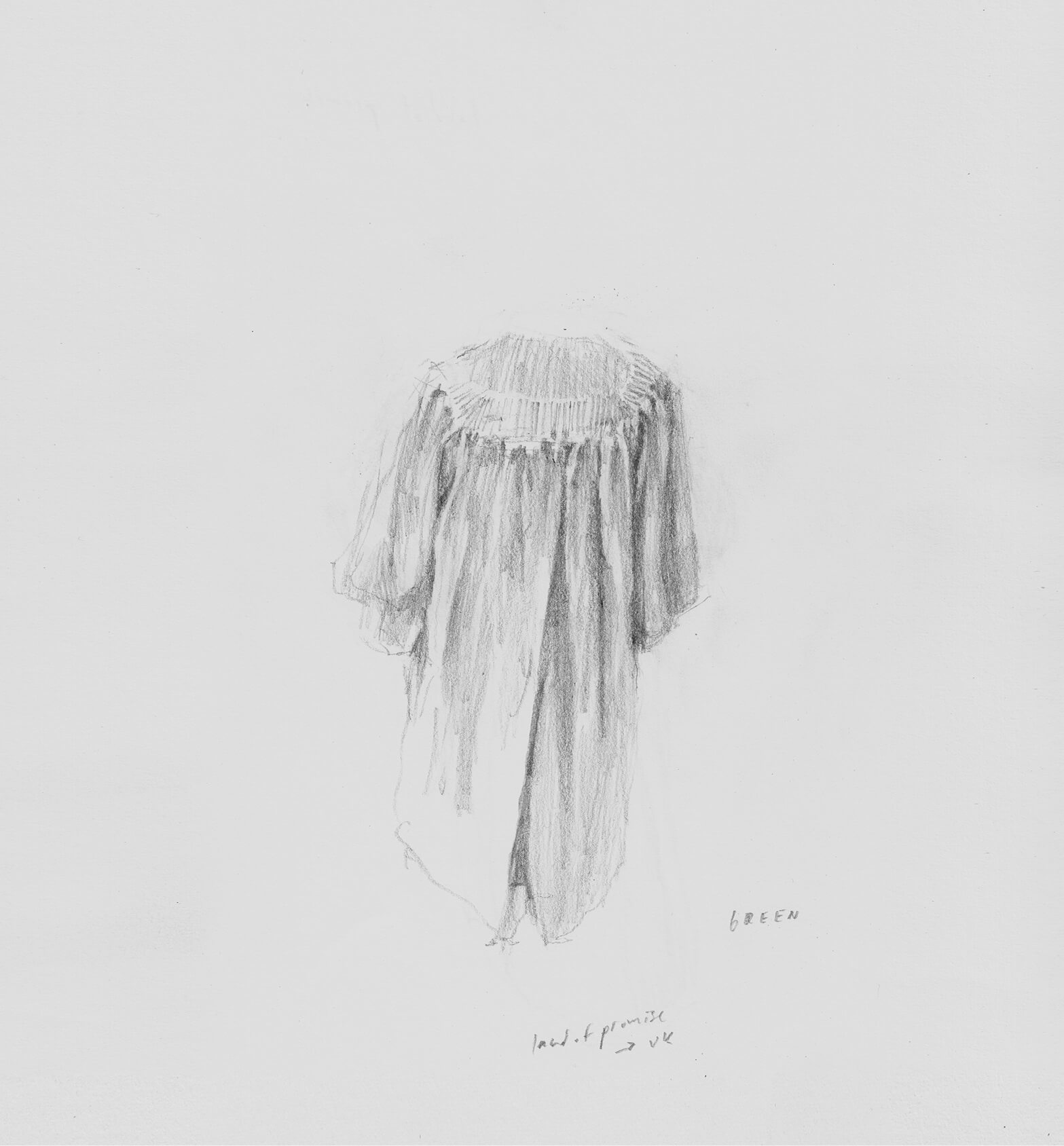
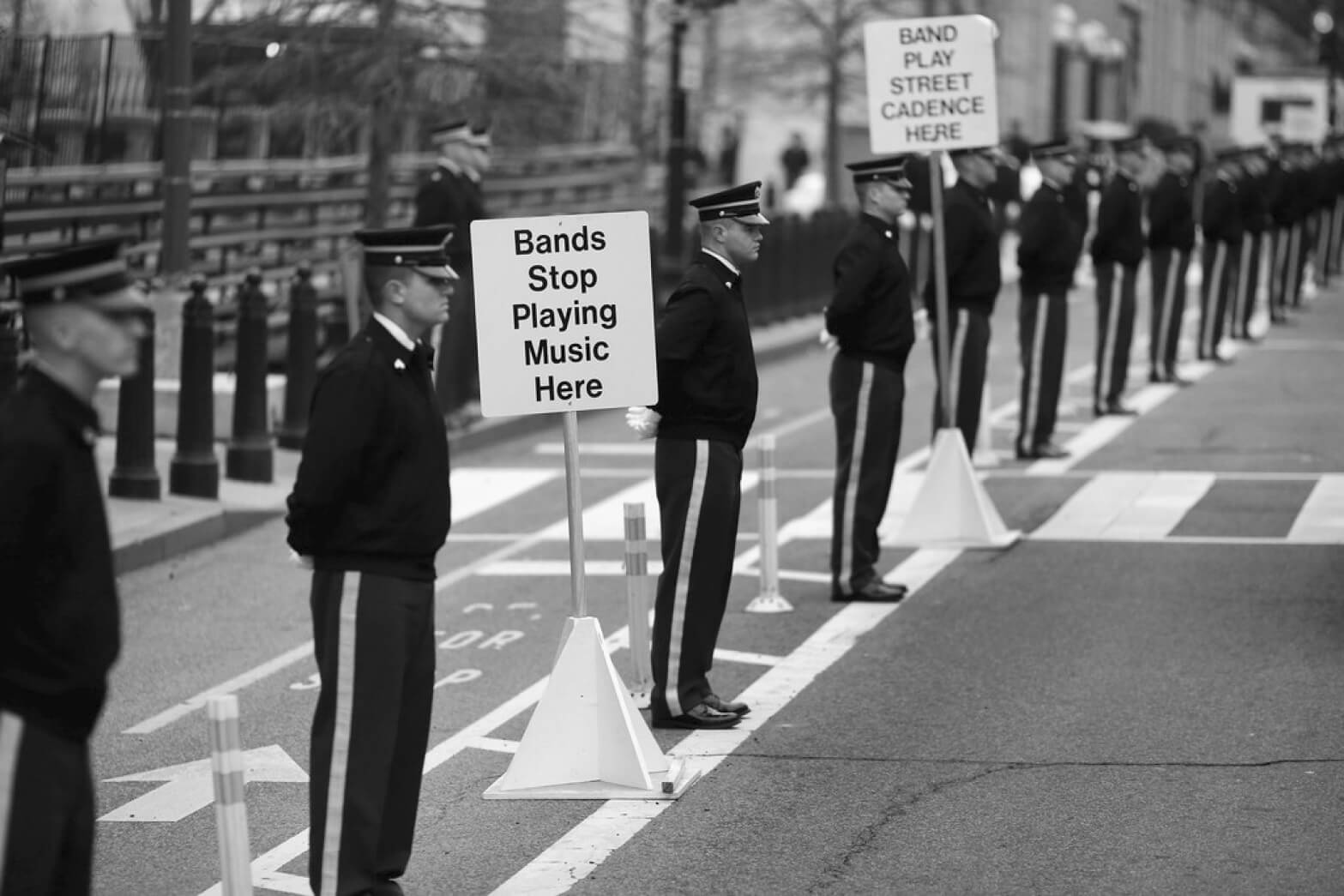
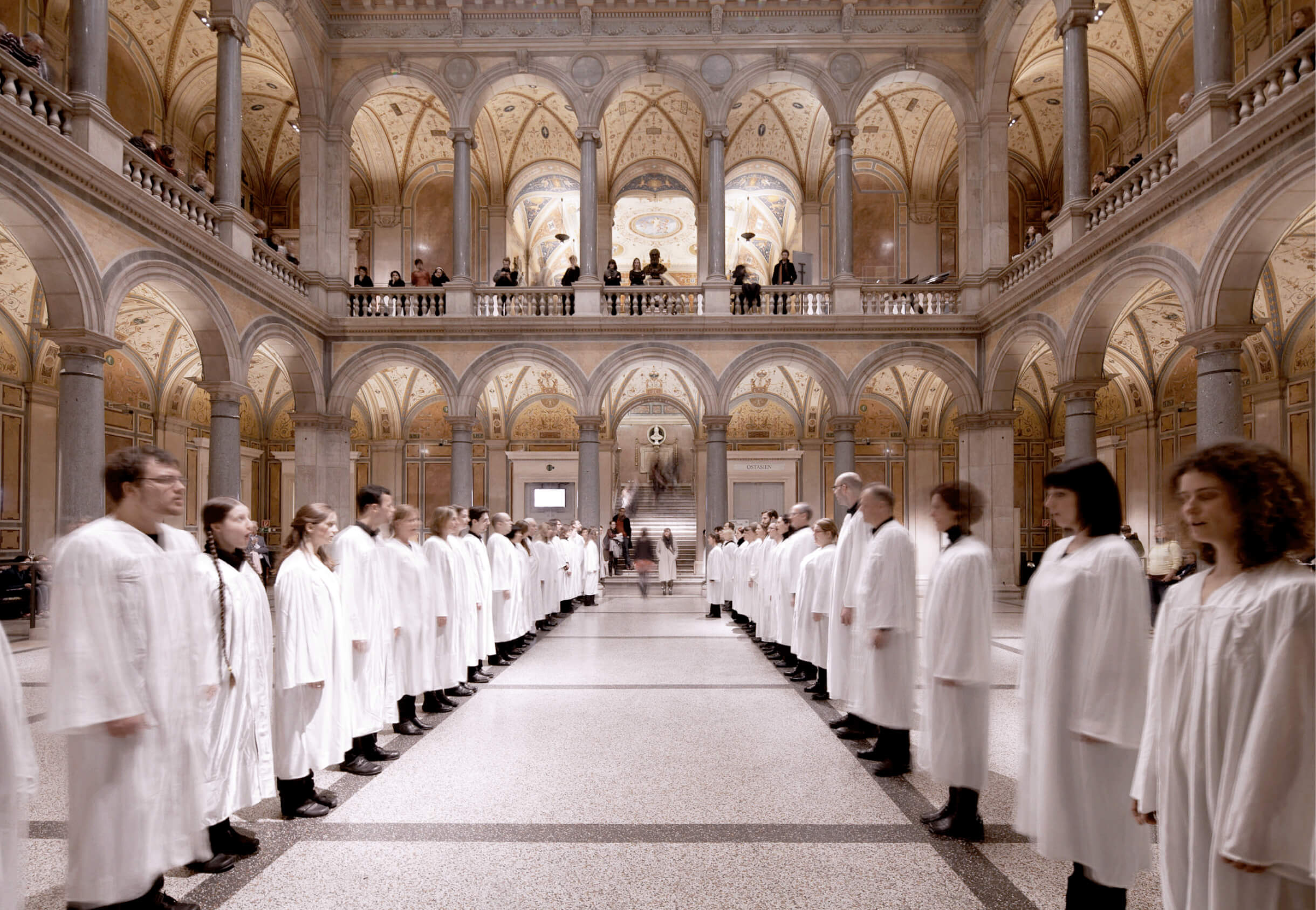
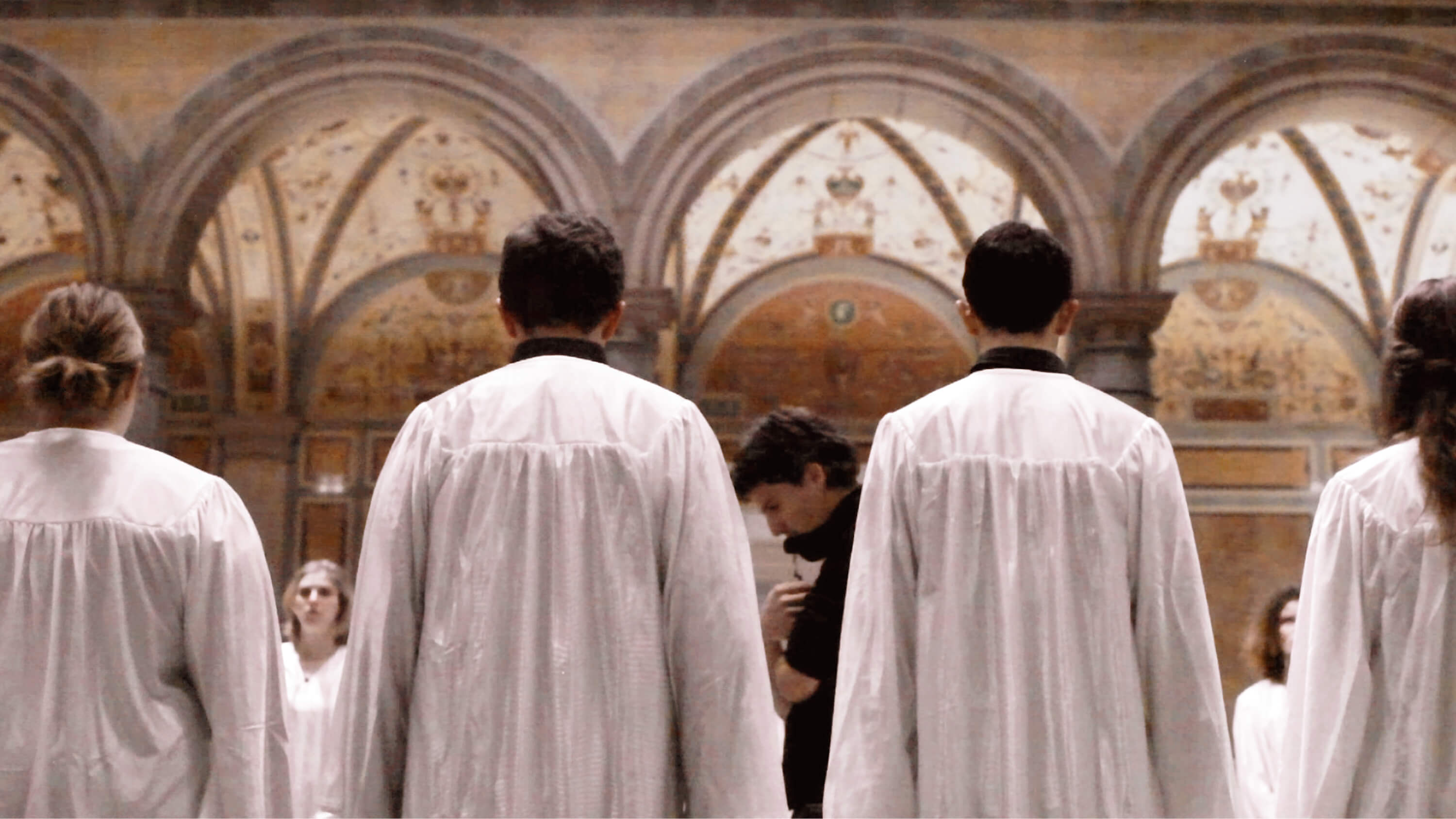
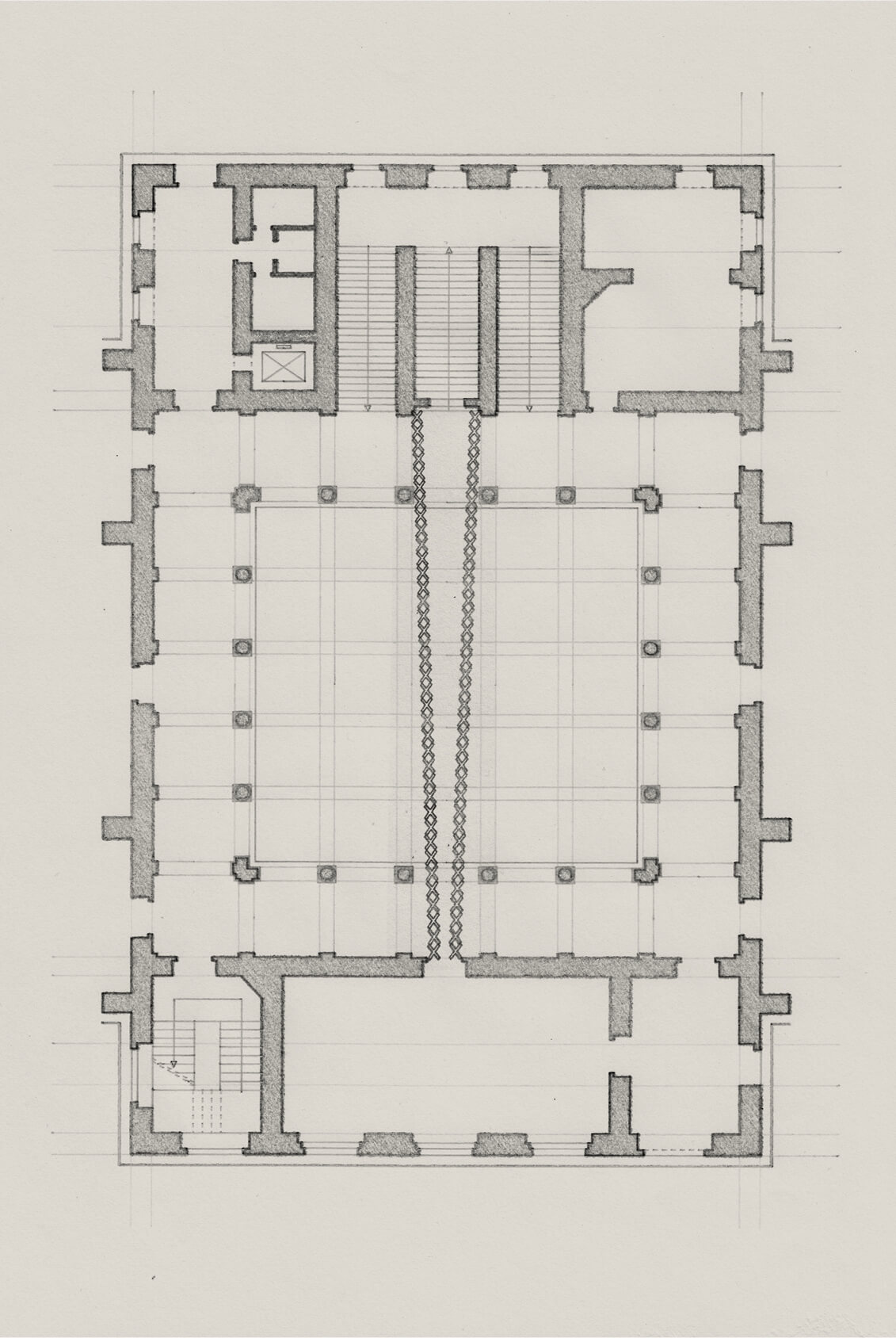
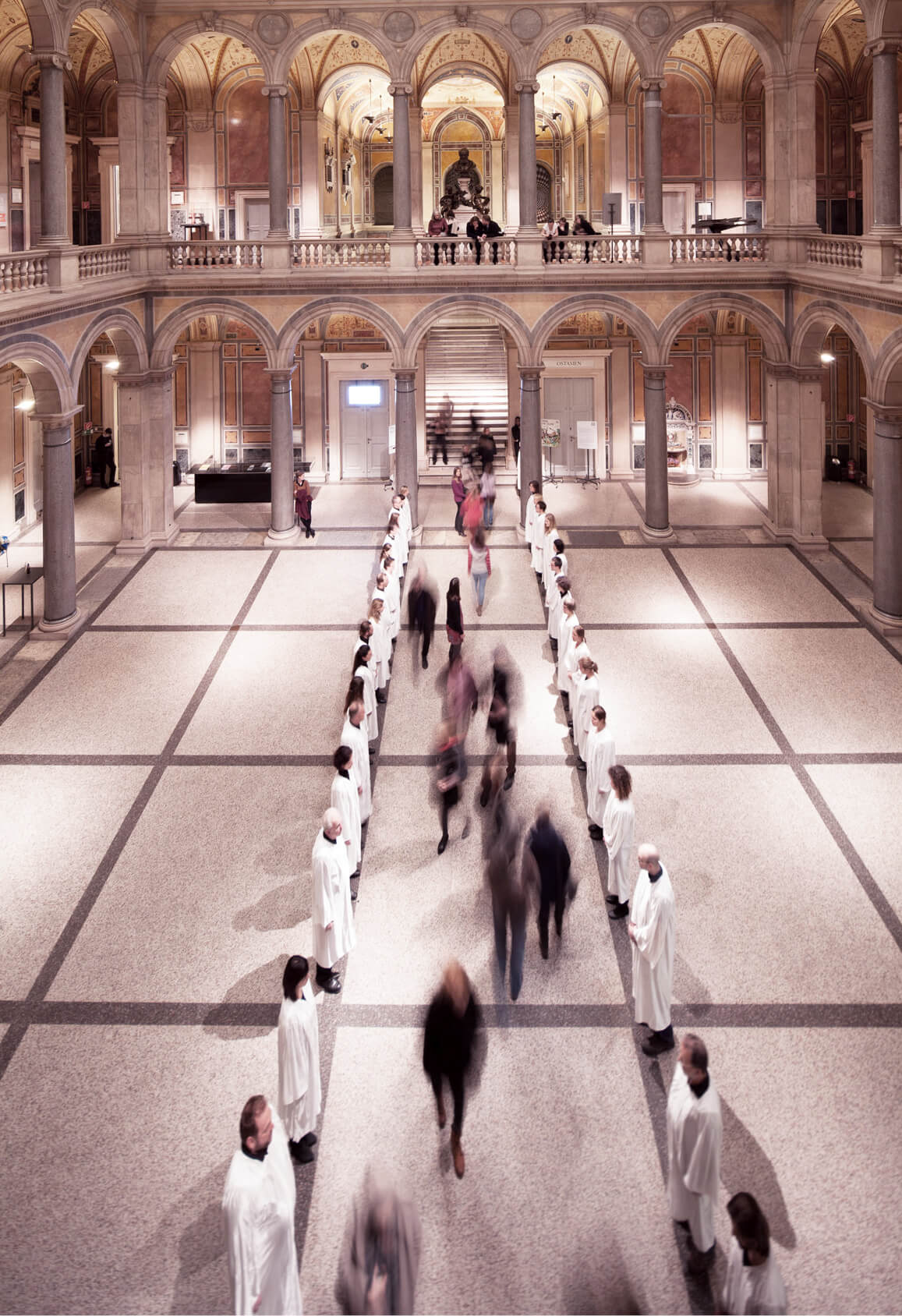
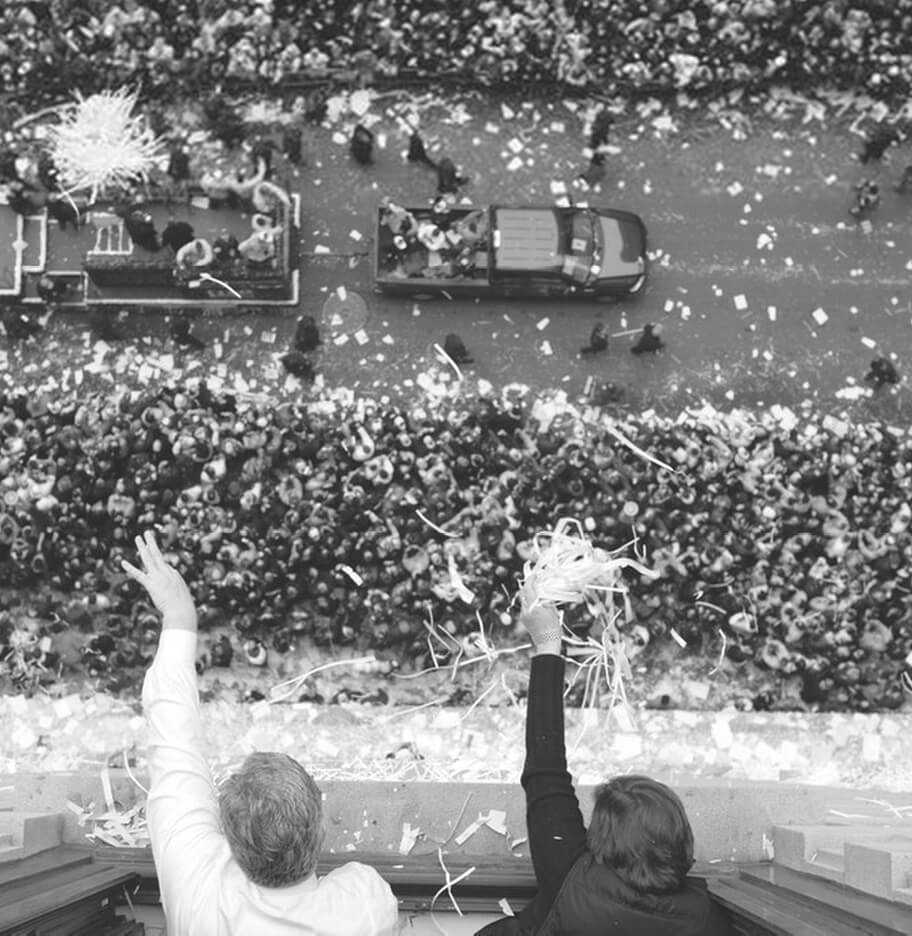
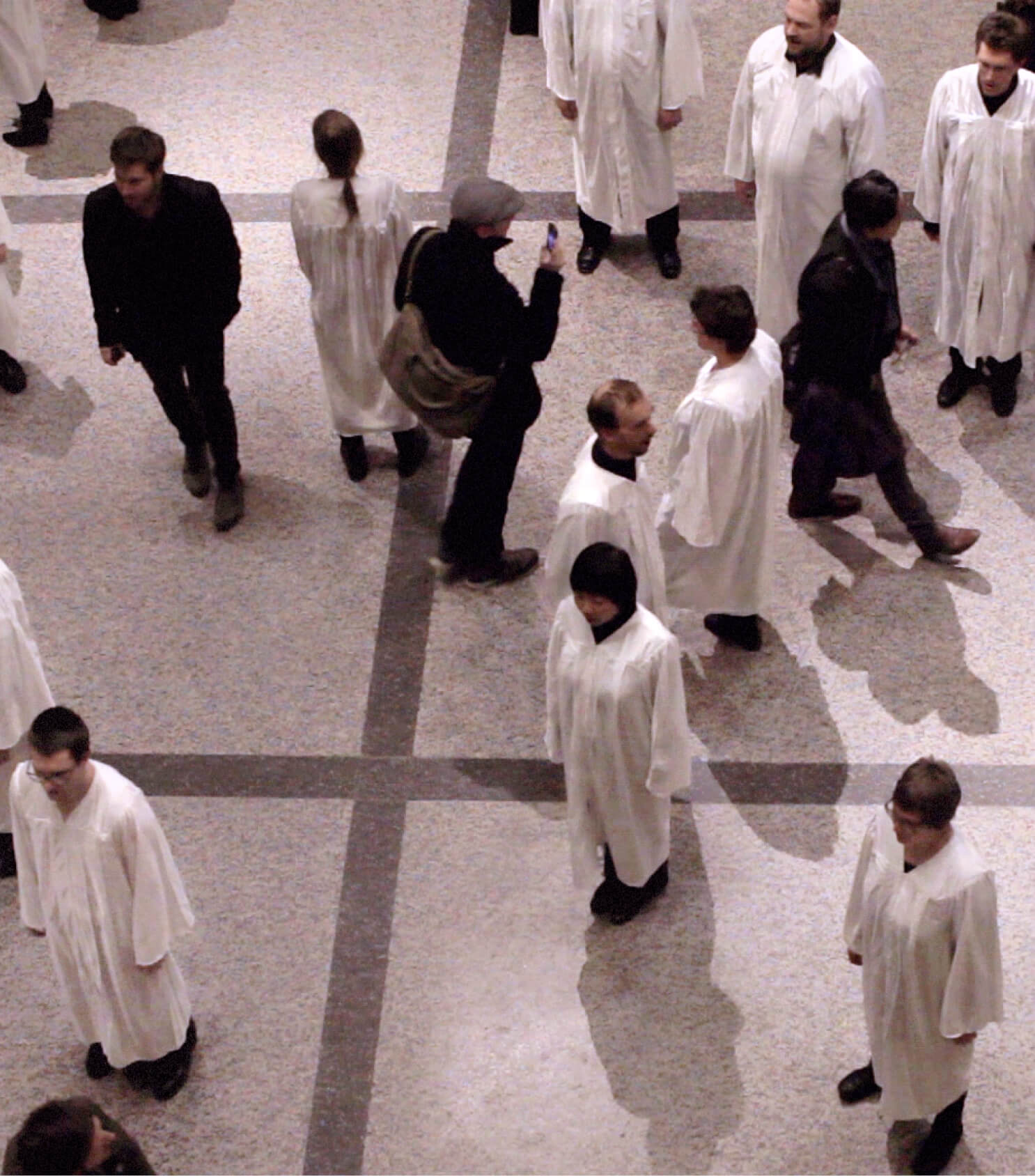
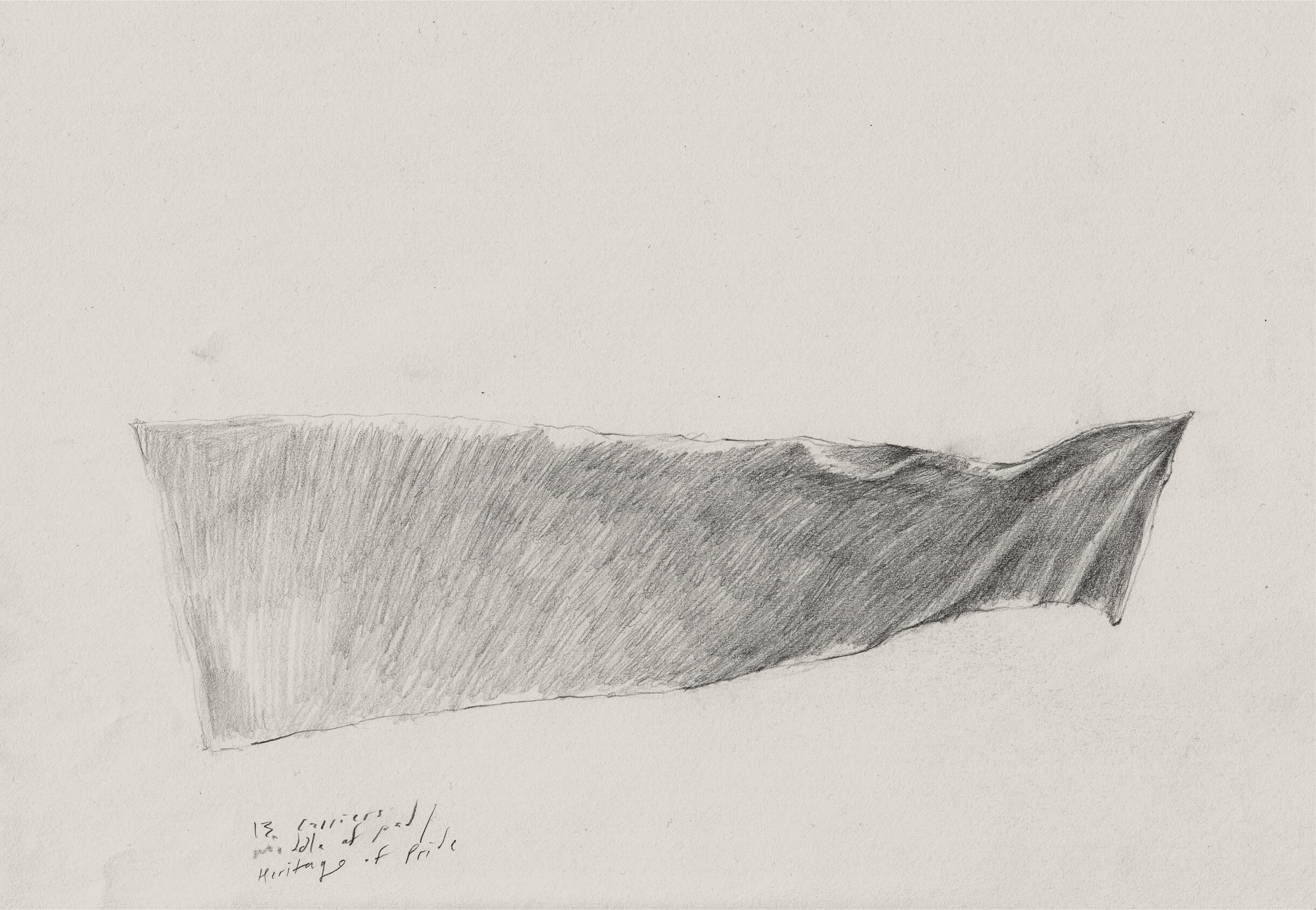
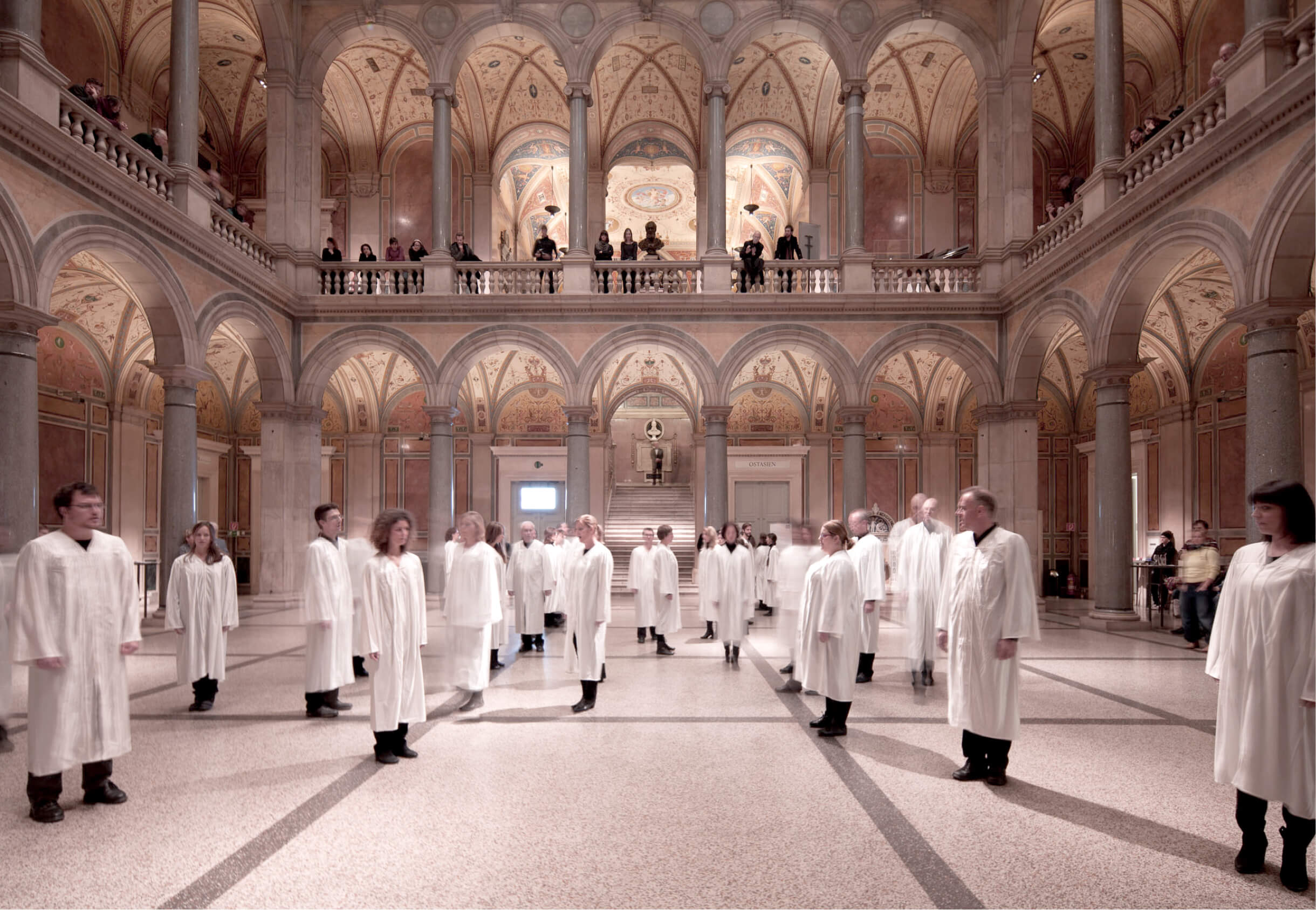

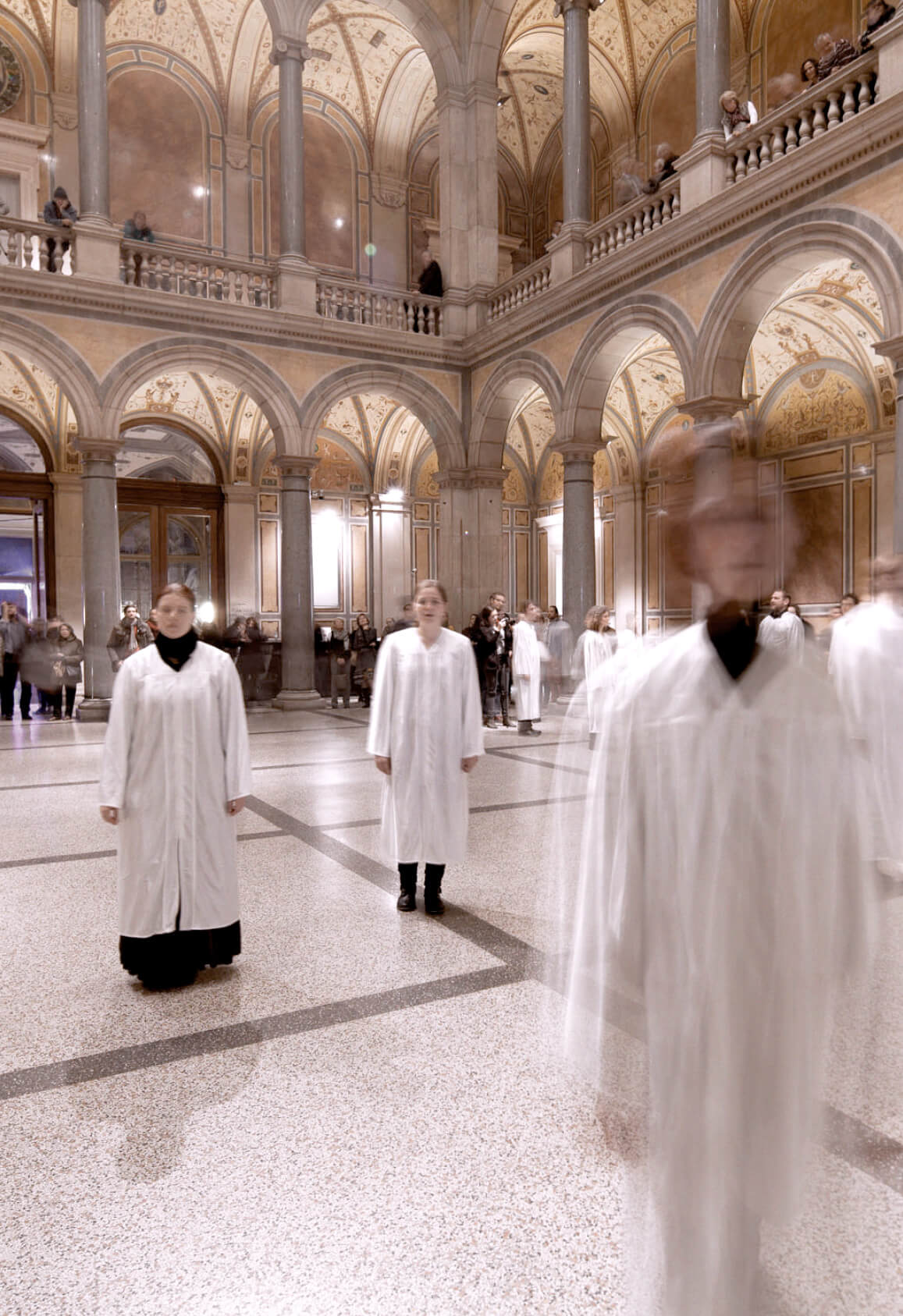
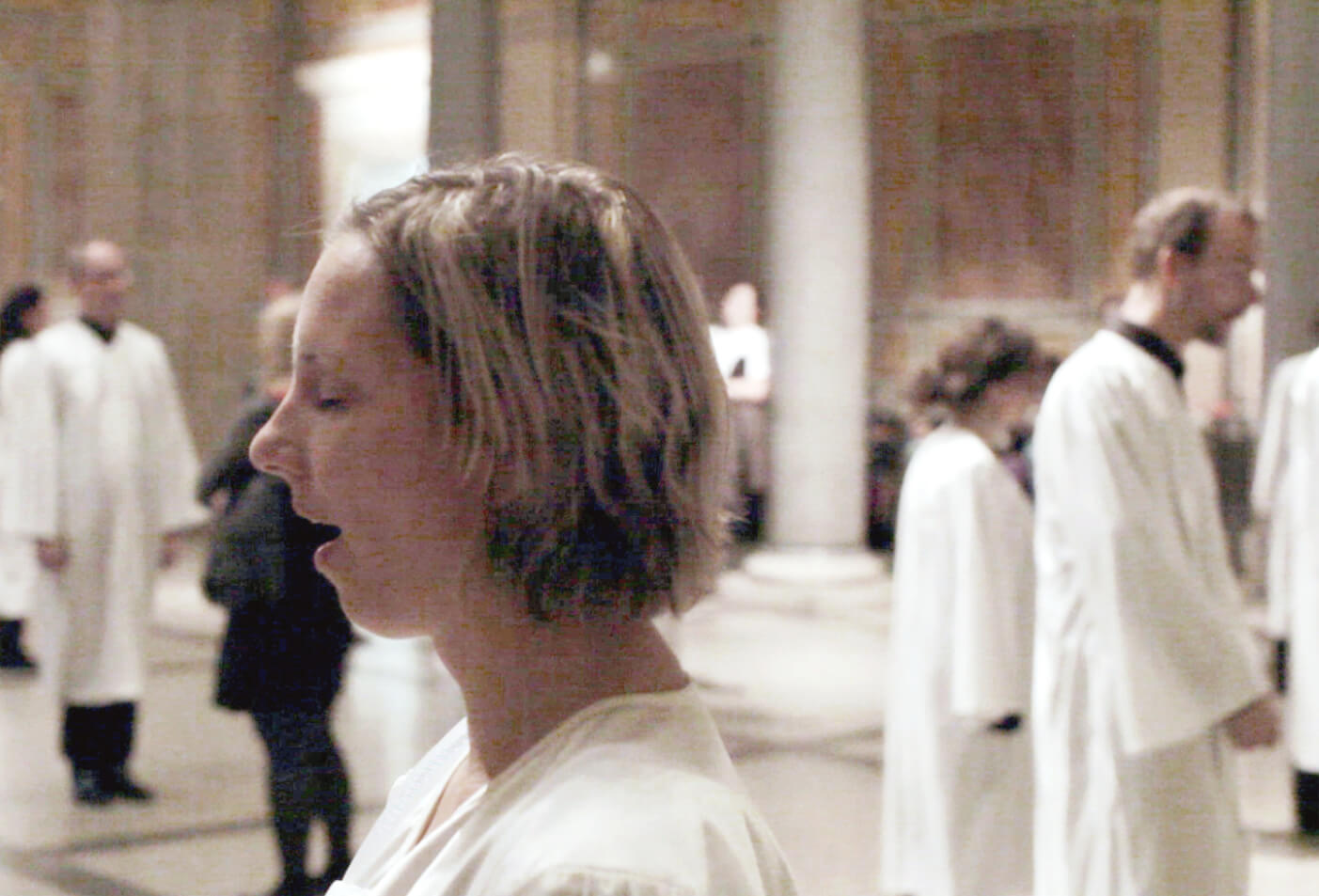
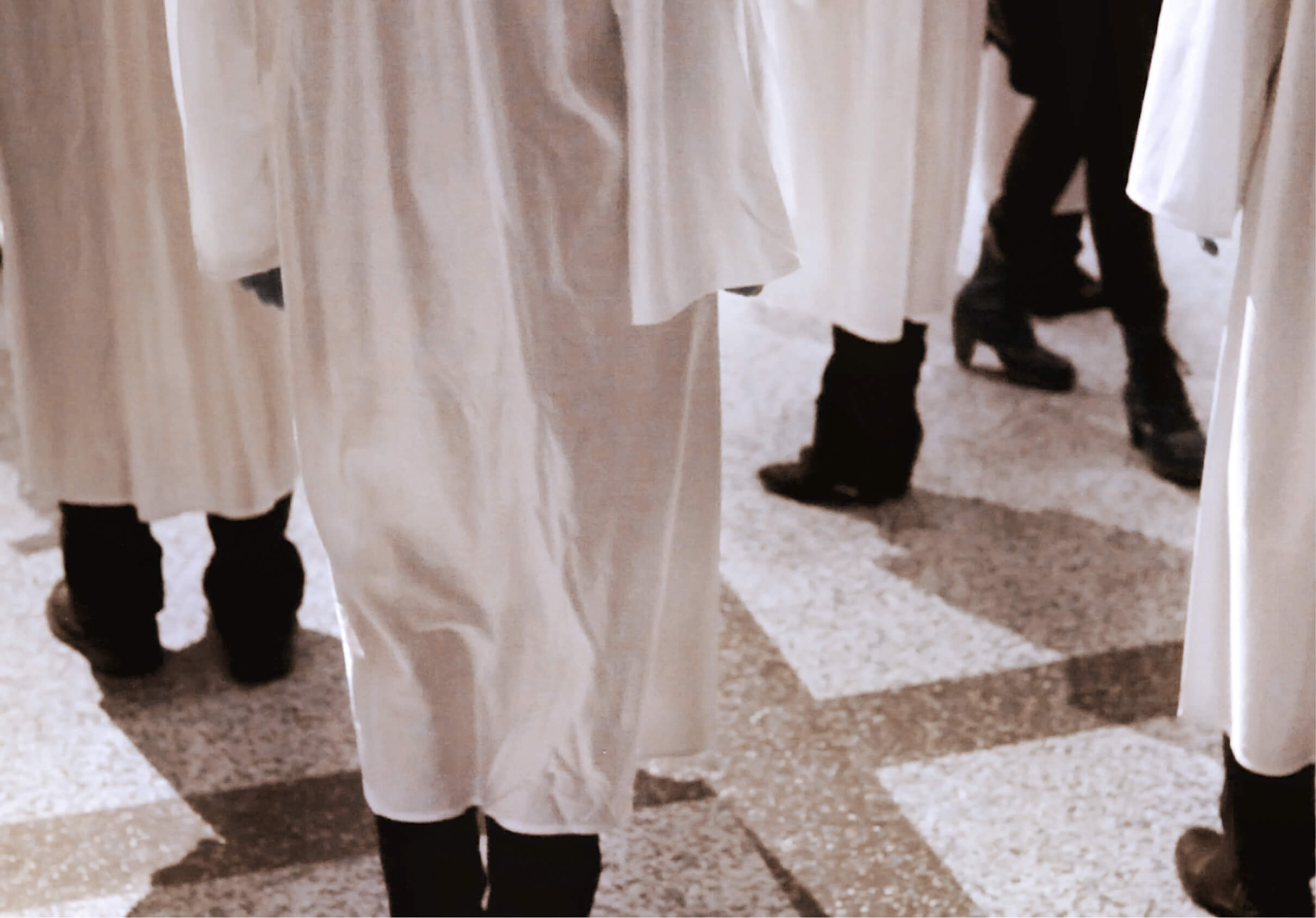
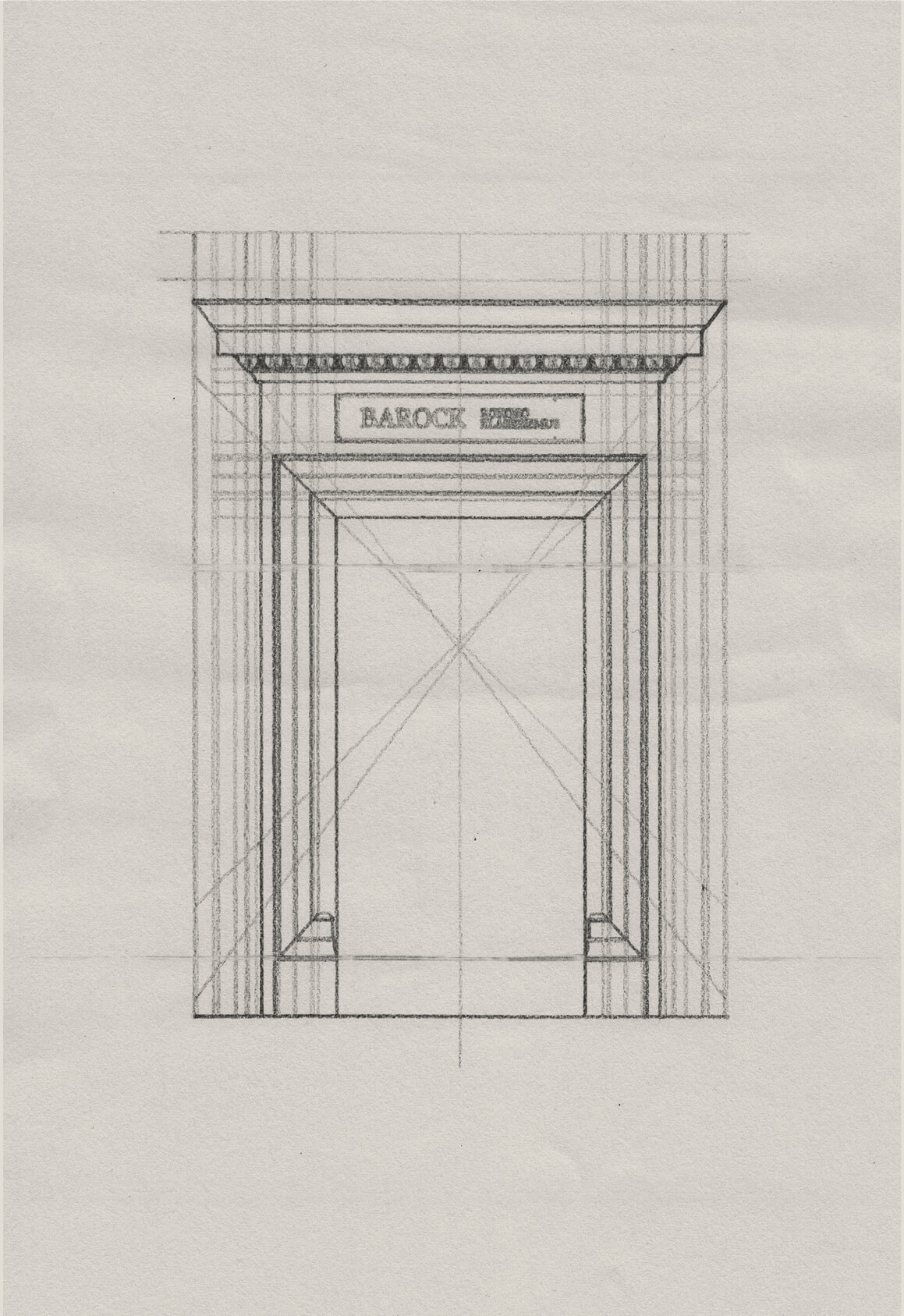
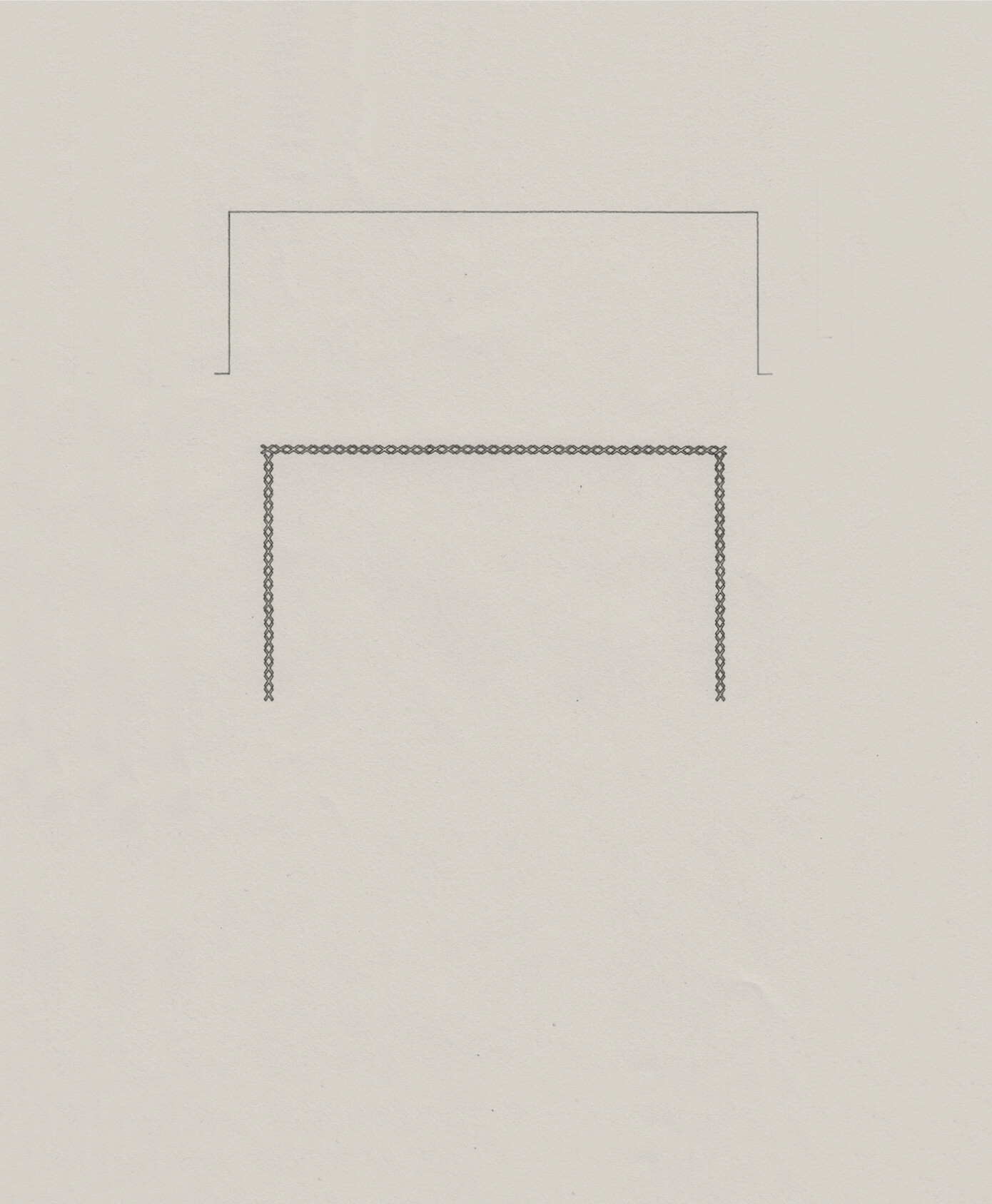
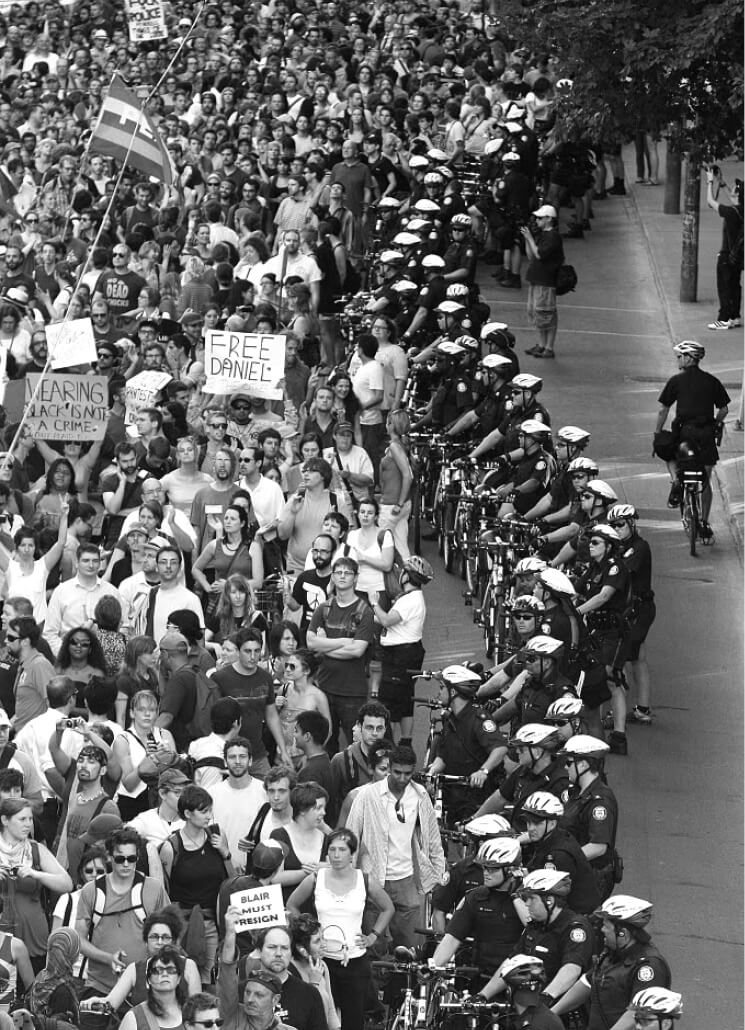
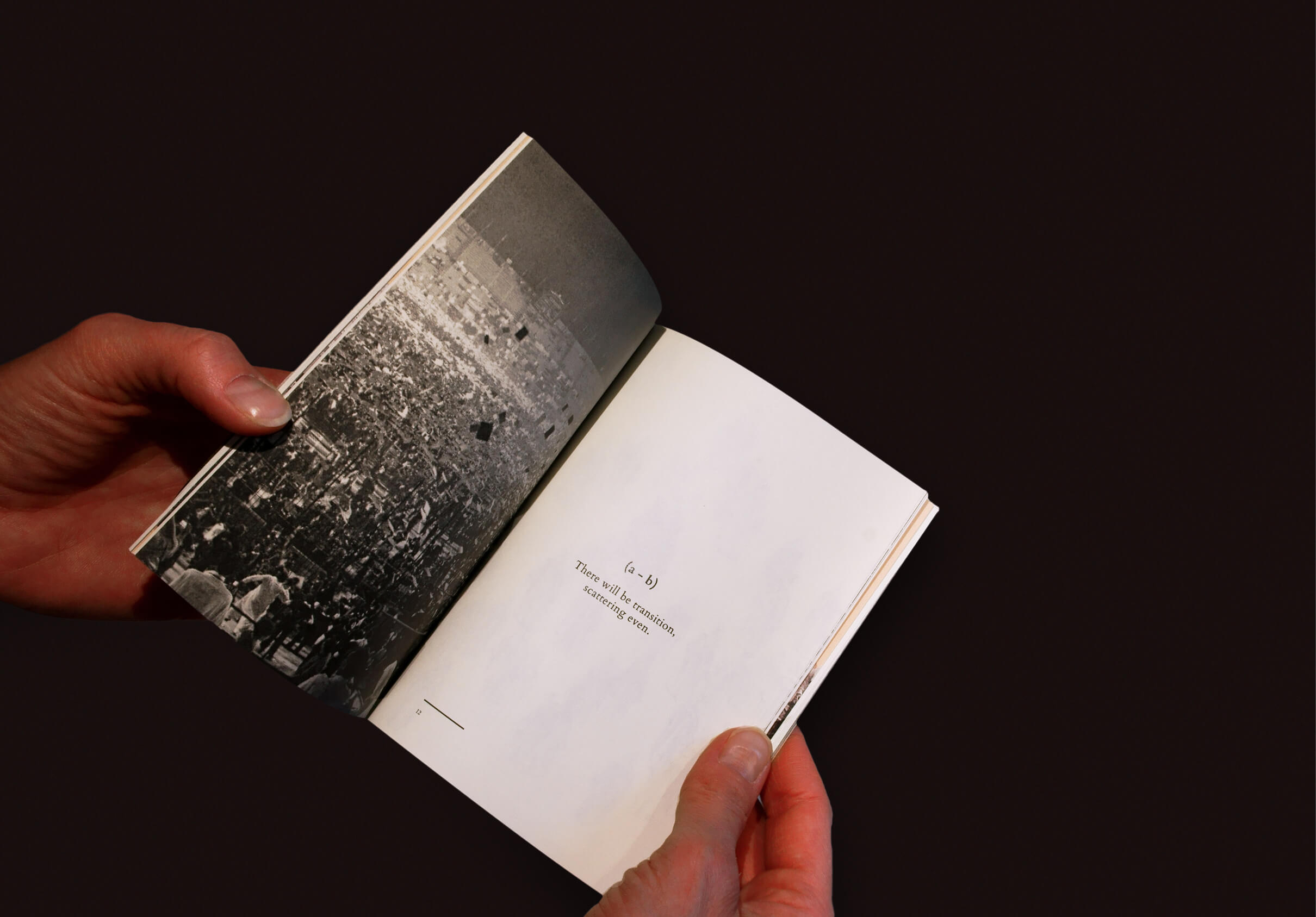
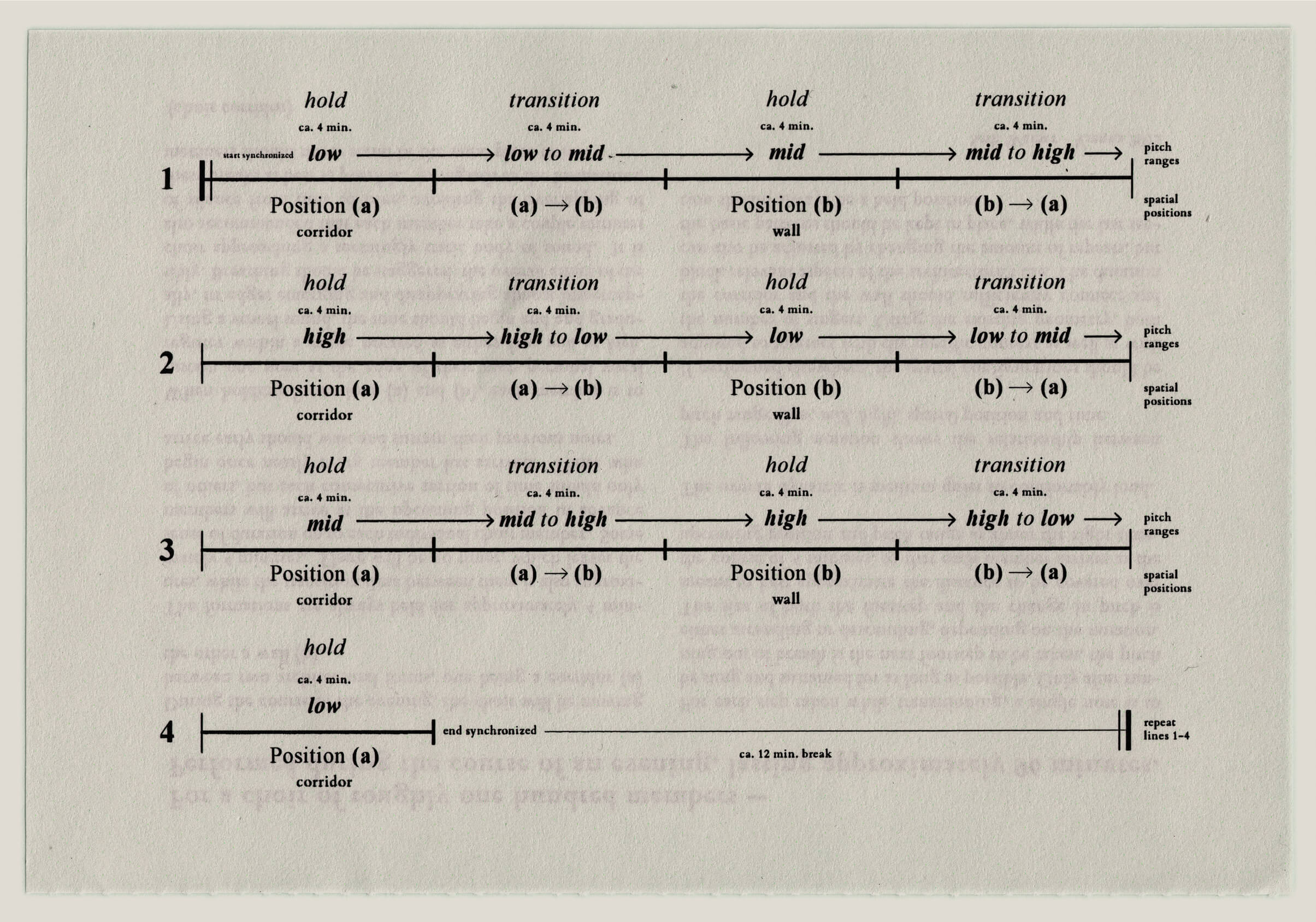
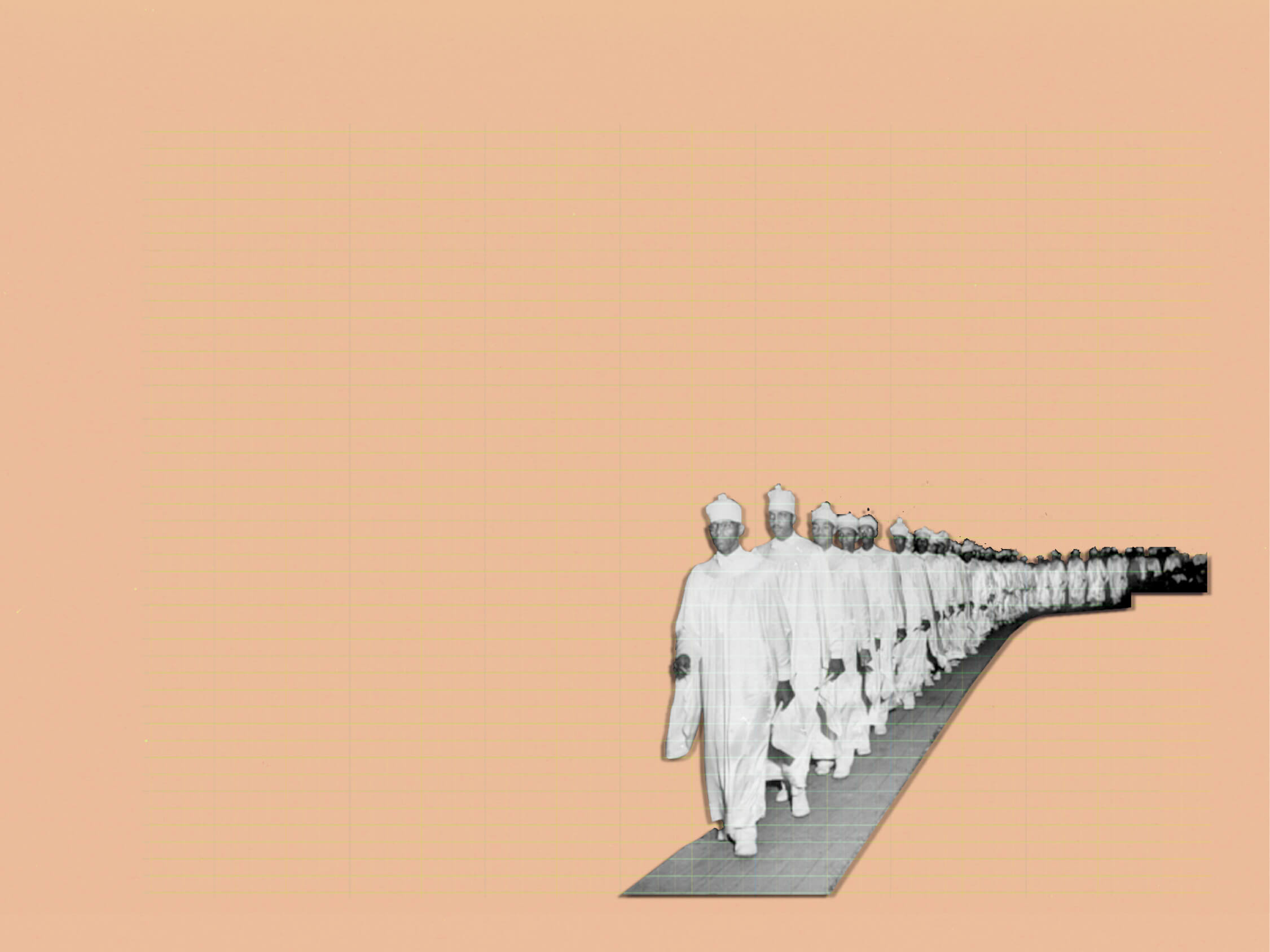
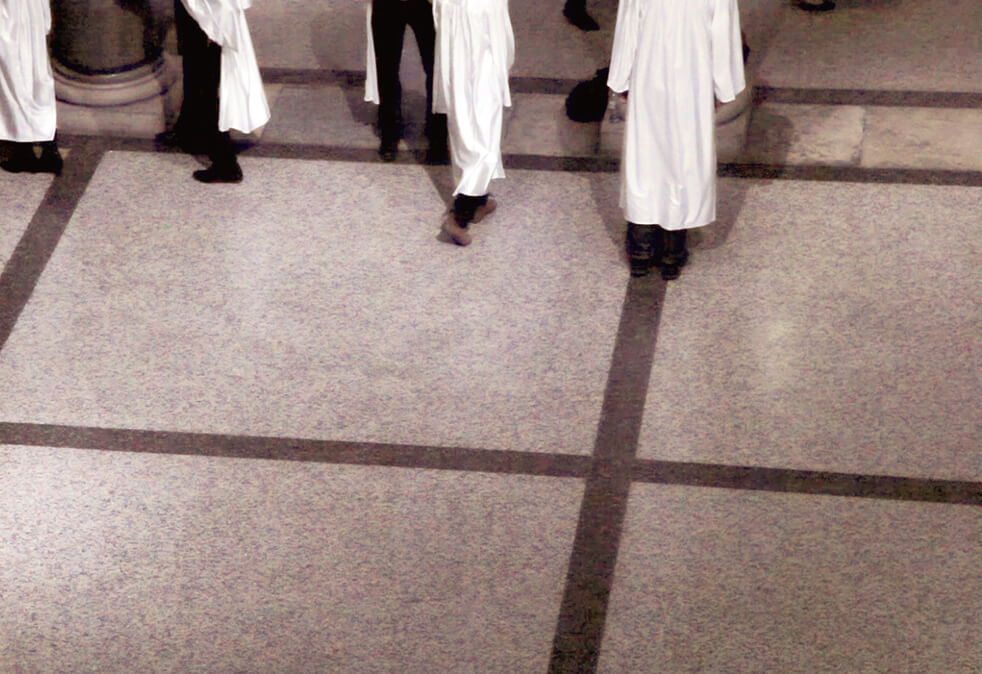


mythical boundaries ( b / WALL ) - When I first arrived in L.A. a few years ago, I moved into a house that was nested within a tight residential grid on the northeast border of Atwater Village, directly above Chevy Chase Blvd. Surrounded by large plots of indiscriminate box stores and scrap yards, the neighborhood was the result of colliding axis, its shape gently influenced by the contour of the adjacent and often dry L.A. River. At its edges the neighborhood stopped abruptly, the shift in scale obstructed by thin strips of bushes which were absorbed by a long chain link fence. On the western block of Sequoia, the road’s straightness held a series of squat apartment buildings and duplicate shotgun homes with small front lawns, sunburnt facades and tall, rusted white metal gates. Predictable and relentless, the sequence of gates mirrored the social space of each preceding street, their careful rectangle boundaries pushing lawn and landscape to the limits of each property line. Without much notice the street terminated in a lot covered with bleached brush. From that dead end, spots of colored planes and corrugated aluminum from a scrap yard peeked through the growth, disconnected and easily ignored. At night when it was quiet, you could hear intermittent tides of traffic from the I-5 filling the riverbed with melodic noise, their movement resonating along the sloped concrete embankments, teasing the absence of water with its own sound._______ The small, two-bedroom house we found on Craig’s List had paper thin walls, thick, low arched doorways and a porch big enough for two chairs. The construction of its interior seemed to have happened at different times and under conflicting conditions. Sunny, the realtor, had recently renovated the house and hastily put it on the market; the first in a series of properties she’d bought in an attempt to quietly gentrify the block, one overpriced rental at a time. We were the first unsuspecting renters. My more knowledgeable roommate, Terry, had lived in L.A. for nearly ten years but for some reason I went alone to visit the place, and out of impatience and naivety signed the lease on the spot. I slept in the back room of the house, my mattress placed across from a corner that would calmly disappear under the shadow of late afternoon, the perception of walls flattening out as if made from one long, continuous surface. There was a guest house in the back of the lot that I could see through my window. The man who’d lived there for thirty years had died while sitting in his chair. For the first two months we were there the guest house was unlocked, and on occasion we’d walk through the single room and admire the tobacco stained wallpaper and variations in the carpet indexing where the furniture had been, his presence somehow suspended in the absence of objects. Later, Doyle von Frankenstein and Gorgeous George moved into the guest house with their daughter Chicken. Once, while dressed in his full Misfits stage gear and makeup, Doyle knocked on the door asking if we had any macaroni and cheese he could have. He also told me that Danzig listens to Abba on repeat when they ride around in his truck, which makes sense somehow. _______ At the entrance of our block sat a corner store that went through a daily ritual of having its facade reformulated. Urgent, scrawled texts would emerge and disappear in spray paint, layering upon one another until the tile had become bruised with pigment. The strokes of the capital letters were thin and confident, their body widths mono-spaced and nonhierarchical in their urgency. The characters’ shoulders were sharp, folding into forty-five degree angles, then hitting an implied baseline as if the tails of the letters were broken upon impact. All of the postings, abbreviations, names, numbers (and the inevitable crossing-out) adhered to this typographic standard, the gymnastics of graffiti with a capital “G” abandoned for a more direct format. For most of my time living in the neighborhood, the meaning of the language remained utterly foreign. I could understand the basic function of the wall as a message board which documented a contest for territory, but not much beyond that. I often fantasized about how the language had evolved, the process of its aesthetics being inherited and transformed, and wondered what the conditions of learning it were. I imagined in-depth seminars exploring methods for creating undiscovered words, workshops which attributed typography and placement to their respective cliques and large maps where boundaries were shifted daily to accommodate the transitory nature of informal ownership. ______________ Within a year of living there, an invisible architecture slowly emerged, tracing the edges of the block, its figure-ground relationship unstable, oscillating violently within its perimeter. One Saturday night my roommate Terry and a group of our friends were dancing around our living room, drinking Tecates and doing mild amounts of blow, his turntables obsessively repeating “Love Come Down” by Evelyn Champagne King. Some friends who had just arrived pulled a group of people from the makeshift dance floor into the kitchen and said that some guys had stopped them when they were driving down our block. After flagging them down, the guys asked where they were going, who they knew, and told them that they needed to drive slow on this street. A mild haze of paranoia started to surround the party, growing with each new guest’s arrival and report of experiencing the same checkpoint. The next morning, as I was leaving the house, I saw that the word “Toonerville” had been spray painted on the curb in front of where my mini-van was parked, the typeface identical to that used on the corner store. _______After a couple of weeks of seeing no other obvious signals directed at us, we returned to a life of blissful oblivion. Another Saturday night party rolled around, “Love Come Down”, dancing, beer, pretty much the same crowd of people. As the night grew later everything seemed calm; helicopters made their normal rounds by whistling through the air with searchlights in tow, friends came and went without hassle. At one point though, after I had fallen asleep, a panicked friend walked through our front door, convened some of the partyers in the kitchen and asked if anyone knew which gang ran our block. He had been stopped at the same checkpoint, where the group of guys told him he was lucky he spoke Spanish, otherwise being dark-skinned was enough to “get you fucked up in this neighborhood”. Within a few minutes of relaying this, the same group of guys came knocking on our door. Unburdened by fear, our friend Miguel stepped onto the porch. The guys told him they were from Toonerville, to which Miguel responded, “And…” One of the guys then answered by punching him in the face and telling him we all had to leave the block immediately; it had been theirs for fifty years. Miguel came back inside, ducking into the bathroom, blood smeared and dripping from his nose. I stumbled groggily out of my room to find all of the lights in the house turned off. The entire party was huddled in the kitchen, whispering about possible scenarios until a wall of fear had wrapped itself firmly in place around the perimeter of the block, its structure reinforced with myth rather than material.
(p. 28-33 / 54 -64)
Roaming Architectural Objects PDF --->
